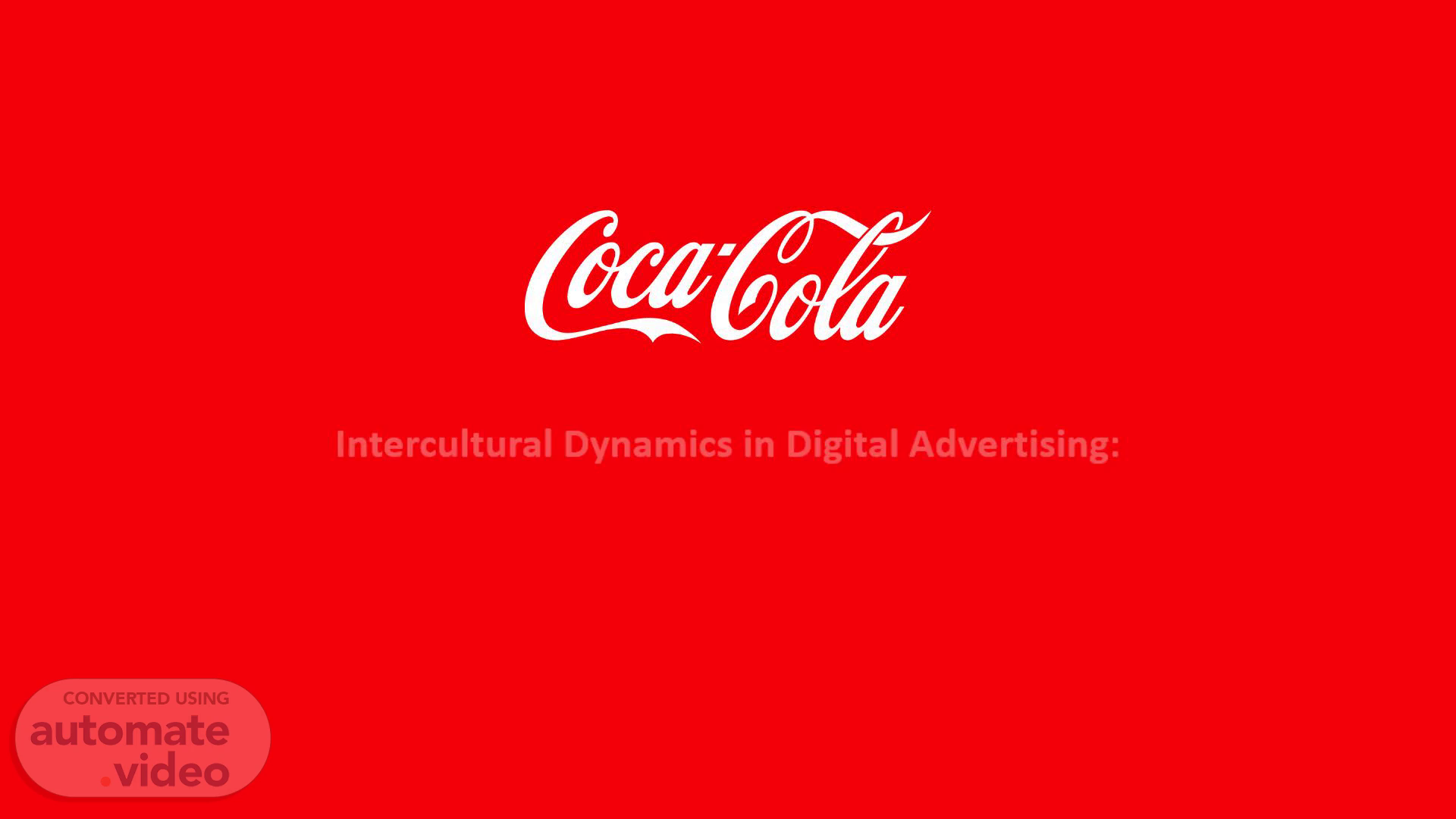Scene 1 (0s)
[Audio] This presentation explores how Coca-Cola Nepal adapted its global brand strategy to engage with the local audience during two major cultural festivals—Dashain and Tihar—by navigating cultural differences and communication practices in Nepal..
Scene 2 (19s)
[Audio] Coca-Cola launched this digital campaign during the Dashain and Tihar festivals, aiming to connect with Nepalese traditions of family, celebration, and unity. The campaign focused on leveraging digital platforms to engage with the Nepalese audience, while maintaining Coca-Cola's global identity. The analysis focuses on how Coca-Cola used cultural communication strategies and digital tools to appeal to local audiences in Nepal..
Scene 3 (46s)
[Audio] Nepal is considered a high-context culture, meaning communication relies heavily on implicit messages, shared traditions, and symbols. In the case of Coca-Cola's campaign, rather than relying on explicit messaging, they used visual storytelling and familiar cultural symbols—like family gatherings, tika ceremonies, and diya lighting—to connect with the audience. This high-context approach allowed Coca-Cola to resonate with the cultural expectations of Nepalese people, who value indirect communication and symbolism in their daily lives..
Scene 4 (1m 23s)
[Audio] Examining the campaign through Hofstede's Cultural Dimensions. Nepal is generally collectivist, meaning family and community are prioritized. Coca-Cola's campaign reflected this by showcasing multigenerational families celebrating together. The campaign also aligned with Nepal's long-term orientation, focusing on traditions and cultural continuity. Coca-Cola minimized uncertainty avoidance by sticking to familiar rituals that the audience could relate to, helping the brand build trust..
Scene 5 (1m 56s)
[Audio] Nonverbal communication played a key role in Coca-Cola's campaign. The choice of red and gold colors—symbolizing prosperity and happiness—was a conscious effort to tap into the cultural significance of these hues during celebrations. Additionally, Coca-Cola used traditional attire and familiar rituals, like tika application and diya lighting, which are central to Nepalese festivals. These symbols not only made the campaign feel authentic but also helped establish an emotional connection with the audience..
Scene 6 (2m 30s)
[Audio] The emotional storytelling used in the campaign was highly effective in evoking a sense of belonging and nostalgia, particularly through the depiction of family reunions during the festivals. Also, Coca-Cola engaged younger audiences by using social media contests that encouraged people to share their festive moments with the brand. Finally, the cultural authenticity of the campaign, thanks to its integration of Nepali traditions, strengthened Coca-Cola's relevance in the local market..
Scene 7 (3m 0s)
[Audio] However, the campaign faced several challenges. One of the main issues was cultural exclusivity—by focusing solely on Dashain and Tihar, the campaign didn't account for other religious or cultural groups in Nepal, which could alienate non-Hindu communities. Another challenge was the perceived commercialization of sacred traditions; some viewers felt that Coca-Cola was exploiting cultural rituals for marketing purposes. Lastly, while the campaign resonated with older, more traditional audiences, it lacked elements that could appeal to the modern, globally-oriented youth, which may have risked alienating this demographic..
Scene 8 (3m 42s)
[Audio] To address these challenges, Coca-Cola could take several steps in future campaigns. First, by including other cultural festivals like Eid or Losar, Coca-Cola could appeal to a more diverse audience in Nepal. Second, blending modern and traditional themes would help attract both younger, urban audiences and more traditional groups. Incorporating influencers who are culturally relatable could make the content more authentic. Lastly, Coca-Cola could introduce interactive features, like augmented reality filters, to increase engagement..
Scene 9 (4m 20s)
Submitted by: Kritan Rajbhandari. Subject: Intercultural Communication.
